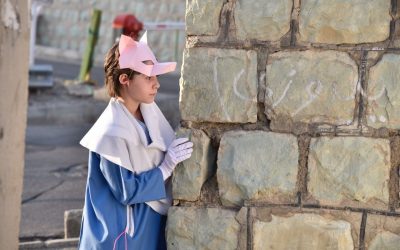Parnian Mostafavi – Writer at the School of Film Majara
All This Victory, directed by Ahmad Ghossein, addresses the conflict between Hezbollah and Israel in 2006. This film has received special awards, including the Best Film Award from the Critics’ Week at the Venice Film Festival. In this text, we aim to compare the mainstream media’s portrayal of the Middle East with the perspectives of independent artists like Ahmad Ghossein through the analysis of his film.
Mainstream media transforms the war in the Middle East into a thrilling spectacle that eventually fails to engage the audience. The media’s camera must capture harsher, more brutal, and exciting images of war, exaggerating the plight of war-affected individuals who struggle with fear, insecurity, and poverty. Over time, these war victims lose their identities, ultimately reduced to mere statistics and numbers. Such imagery prompts audiences to respond emotionally rather than encouraging deep reflection and contemplation, leading to their indifference towards significant issues like war and the ongoing slaughter of humanity in the Middle East.
To disrupt this cycle of indifference, a process of defamiliarization is necessary, one that artists like Ahmad Ghossein can facilitate.
Ahmad Ghossein is an artist who captures the reality of a long and exhausting war in All This Victory. This war embodies not only destruction, killing, terror, and despair but also a repressed anger and mourning for the war-affected individuals. War, perhaps more than the moment a rocket or missile strikes a home, is characterized by the fear experienced by a war victim during the impact of a missile. It is a condensed state of the time spent waiting for death. All the debris and horrific sounds signify only death and destruction.
The most significant issue depicted in All This Victory is the sorrow that has transformed into mourning among its war-affected characters. They remain stunned and bewildered. Although survival is still a priority, perhaps survival is no longer of utmost importance. Ghossein beautifully captures these moments, which may not offer compelling content for Western media.

Parnian Mostafavi
Another prominent theme in All This Victory is the issue of seeing and being seen. In one scene, the camera positions itself from the perspective of the enemy and moves toward five characters in the film. They are afraid and slowly back away, each looking around the camera lens as if soldiers are standing behind it. This scene serves as a metaphor for how the media views war-torn individuals in the Middle East. The camera captures the characters, and in the same moment, they could be killed (when they pretend to die). The camera presents a striking overhead view of several individuals’ deaths. It suggests that news media and international journalists are eager to witness and document the violence occurring in the Middle East. It seems that the fundamental issue is no longer conveying the voices of the people in the Middle East to the world, but rather producing exciting news content at any cost.
Alongside these complex emotions, Ghossain focuses on the details that reveal the humanity of individuals and bring them closer to each other. This approach is perhaps the exact opposite of what the media does with images of war in the Middle East. In the media, people from the region become subjects ready to transform from living humans into dead numbers, and this is where independent filmmakers like Ghossain disrupt the equation. In All This Victory, each character has a story and memory that distinguishes them. At the same time, they exhibit emotions and reactions that resonate with all human beings on this planet. Ghossain showcases pain through paradoxical situations and humor, revealing the injustices faced by war-torn individuals without resorting to sentimentality. In fact, he uses irony to create a distance that fosters not an immediate reaction but rather a painful and profound contemplation in the audience. For example, when an elderly man might alert soldiers to the presence of several individuals downstairs with his cough, Marwan gently places his hand over the old man’s mouth. If he were to press too hard, the old man might die; if he allows him to cough loudly, it could endanger both himself and others. Such a situation foreshadows an inevitable death.
All This Victory looks at the Middle East from within the Middle East. This contrasts with the typical perspective that a Westerner has of the Eastern Other, often redefining it. Ghossain, as a Lebanese director, can view Lebanon through the lens of his camera, reflecting on the war he has lived through. This perspective, although it may still be intertwined with the imaginations of Orientalists, is incredibly valuable and impactful because it stems from the inner experiences of someone from the Global South.
Ahmad Ghossain intelligently redefines the Lebanese, Middle Eastern Arab, and Muslim identity but also separates these labels from the human essence of his characters. He reminds us of a crucial point that geography often obscures: that first and foremost, we are all human beings and inhabitants of the Earth.
The director chooses to depict not the war in the Middle East but the situation of five war-torn individuals who have taken refuge in a house. In this way, he moves away from the stereotypes historically associated with Arabs and showcases humanity. All This Victory portrays the war from the perspective of a war victim, focusing on aspects that the media is disinterested in presenting.
The emptiness and silence between the strikes of two missiles capture the exhaustion that has drained the spirit of the war victim to the extent that even the death of a loved one cannot save them from the psychological death they are enduring.
And now the question arises: if all the physical wounds could be removed from the life of the war victim, would the scars left on their psyche also disappear?











